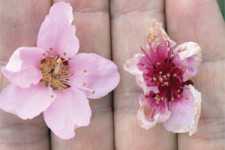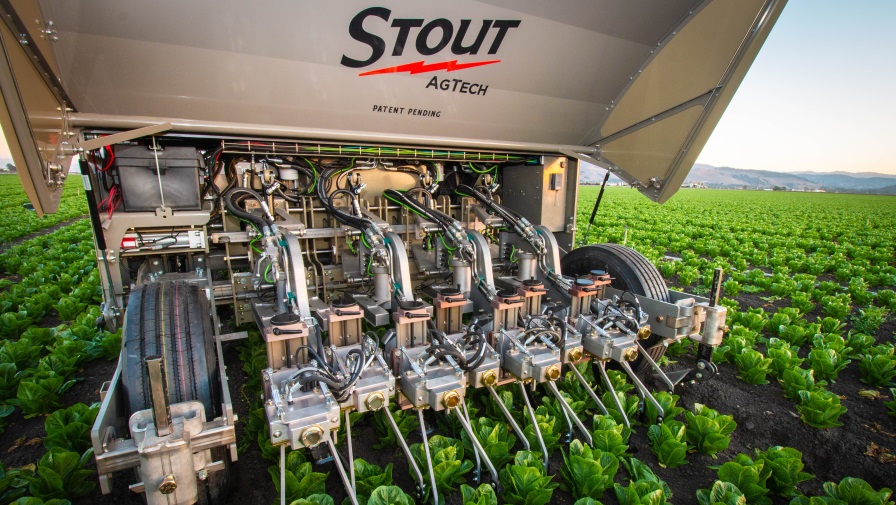Minimizing And Managing Cold Injury In Peaches

The first and most important thing that a grower can do to reduce the potential for cold damage is to choose a good site prior to planting the orchard. For fruit, this is generally high ground that allows for easy drainage of cold air off the site. Low spots or “frost pockets” should be avoided.
Second, the choice of the proper cultivars is critical. Cultivar choice should be based on sufficient cold hardiness for the region in which they will be grown as well as a suitable chilling hour requirement. In temperate areas, low-chill cultivars tend to bloom earlier in the spring than medium- and high-chill cultivars. As a result, they present a higher probability of being at a more advanced stage of flower development (making them more sensitive to cold) when springtime freeze events can occur.
Third, the timing of dormant pruning is important. Because dormant pruning is an invigorating process (it stimulates tree growth in the spring), it is best to delay dormant pruning as long as possible prior to bloom. This may not be practical, however, given the large acreages in many commercial farms and the time required to get all trees pruned effectively on time.
Fourth, orchard floor management can significantly influence springtime orchard temperature. Soil that is devoid of vegetation can absorb more heat during the daytime and liberate (give off) more heat in the nighttime than soil that is covered with vegetation (i.e., sod, weeds, etc.). Similarly, soil that is moist from irrigation or rainfall is also warmer at night than dry soil because of its capacity to absorb more heat during the day and subsequently liberate that heat at night. Under most circumstances, the coldest time of the day in the orchard is immediately before sunrise.
The most difficult freeze conditions to manage occur when it is very cold in combination with high wind speeds (advective freeze). During cold, still nights (radiational freeze), wind machines can be used to stir warm air above the orchard (inversion) back down into the orchard and raise the temperature, potentially averting freeze damage. Depending on the region of the country, some growers may supplement orchard heat by using orchard heaters, burning straw bales, etc.
The appearance of freeze damage differs depending on the timing. If the damage occurs in deep winter, dormant flower buds are killed. Typically, these buds will not swell and they will abscise (drop off) prematurely. Occasionally, however, these buds may swell, but the pistil inside is dead and they will probably abscise shortly thereafter. If damage occurs later, during the various stages of flower development, it is possible to have flowers with a dead pistil but the anthers are still viable. Usually, at these later stages of bloom, however, a brown pistil and withered and brown petals are obvious. Flowers damaged to this extent will abscise. Under most circumstances, flowers on a given fruiting shoot will mature from the apex (shoot tip end) to the base. This means that flowers typically open first at the tip end and last at the base end of a given shoot. If open blooms at the shoot tip are frozen, it is possible that unopened blooms near the base of the shoot may not be lost.
Potential For Late Freeze
Following pollination, once fruit have set and they are beginning to grow, cold damage can still occur. The “Easter Freeze of 2007” was one such occasion when temperatures in the low 20s occurred on three successive days in early April in the southeastern U.S. At this time, fruits were already 1 inch in diameter or larger in some cultivars. Damage to intact fruits was visible on the outside by skin cracking where the cracks would enlarge as the fruit expanded in diameter. When damaged fruits were cut along their longitudinal axis, varying levels of damage to inner tissue (seed and pit/endocarp) were noted. Generally, fruit that were severely frozen dropped off naturally. However, some fruits with damaged seeds remained on the tree and had a deformed growth, never attaining proper size, and being particularly susceptible to infection with brown rot fungus.
To see several photos of freeze damage and to learn more about temperatures that cause cold damage to peach flower buds, please visit my “Everything About Peaches” website and go to the “Frequently Asked Questions (FAQ)” section. Two cold damage FAQs appear in the “Commercial Production” section there.










